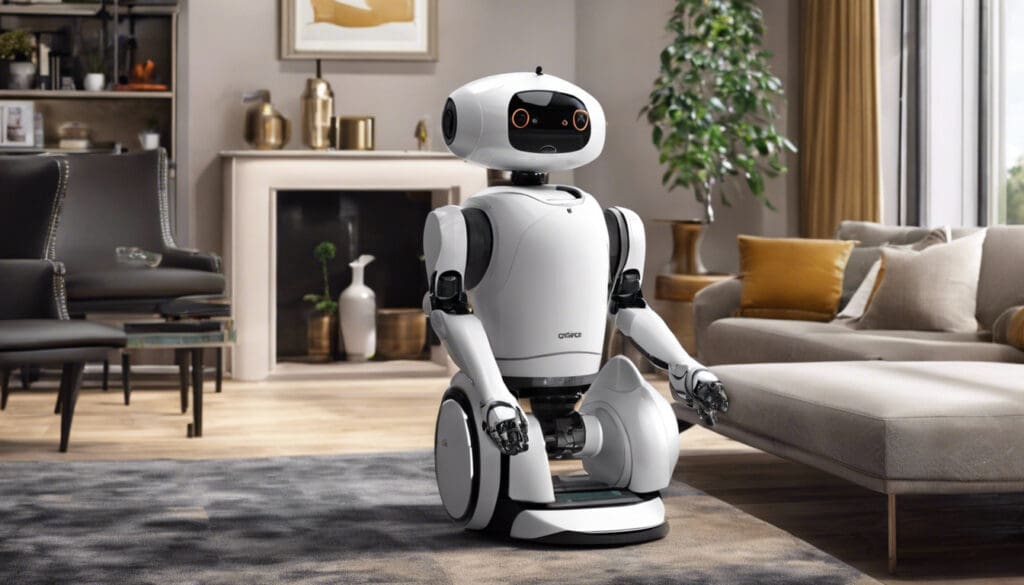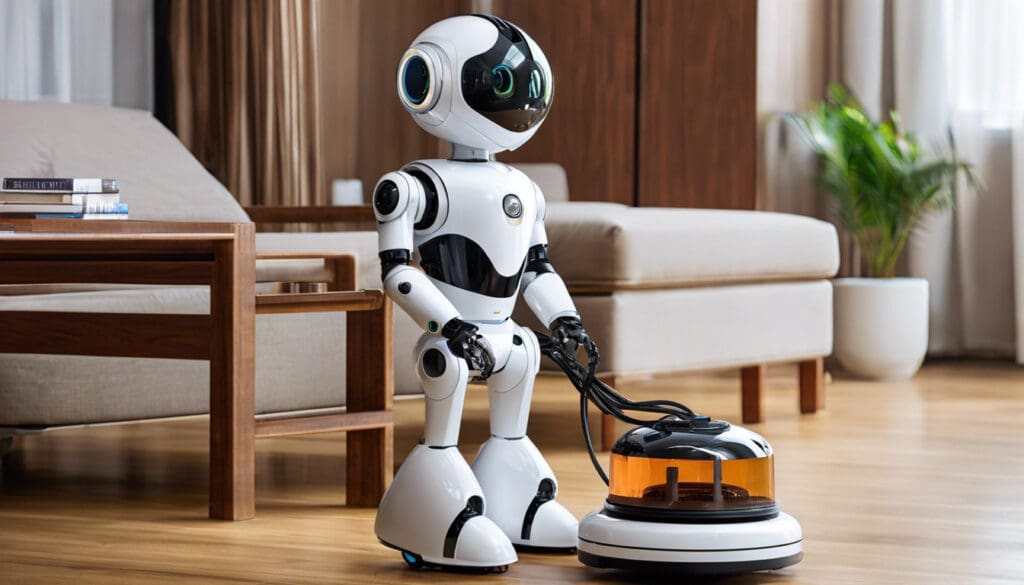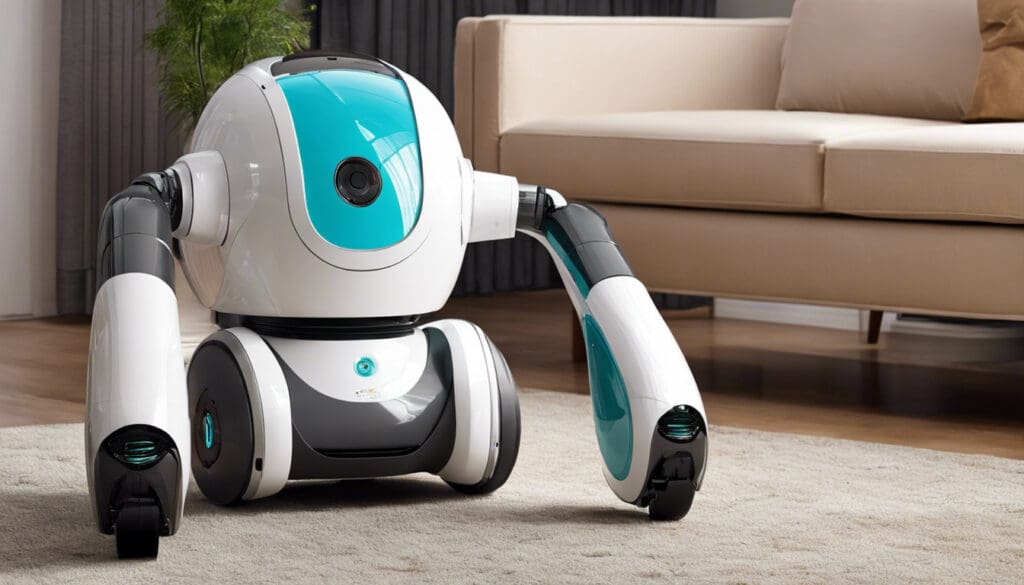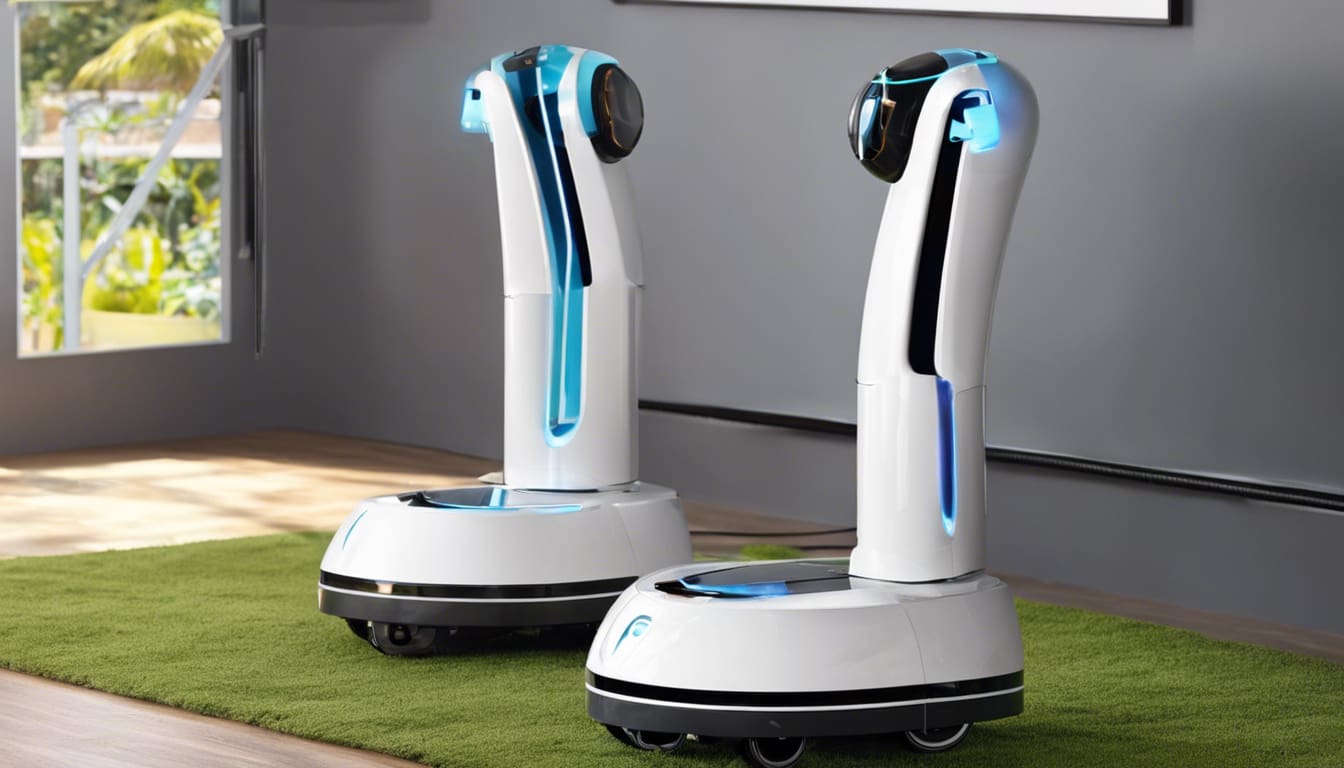The Secret of Companion Robots Beyond Just Cleaning
Ever considered your home robot as more than a cleaning device? With about 20 million homes having a robotic friend, we’re all intrigued by the idea of finding companionship in machines. Companion robots are stepping into new roles, going beyond chores, and touching our emotional lives. But what exactly powers these personal robots to connect with us on a deeper level?
In this post, we’ll delve into the world of companion robots, shedding light on how they offer comfort, friendship, and even empathy. We’ll cover the leap in emotional smarts in robots and how these innovations are enhancing our interaction with our mechanical pals. Whether you’re passionate about tech or just curious about the future of personal robots, understanding how they work can change the way we see and interact with our artificial companions.
Eager to see your robotic companion in a different light? Join us as we explore what they’re capable of beyond cleaning.
In the article
The Journey of Companion Robots
Companion robots, also known as robotic friends, have evolved significantly from simple gadgets to complex machines that offer emotional support and companionship.
It’s fascinating to think how these robots have moved from basic automated cleaners to sophisticated personal robots. This evolution has broadened possibilities, making human-machine interaction more intimate and significant than ever.
Today, our homes, schools, and healthcare facilities welcome these empathetic robots that do more than follow orders. Understand and connect with human feelings in their unique ways.
From Simple Helpers to Emotional Buddies
Initially, robotic companions were mostly seen as tools for household chores. But as technology improved, the focus shifted to personal care robots, designed to keep us company and provide emotional support.
Significantly, companion robots for the elderly and robotic pals for kids have transformed care and education, seamlessly integrating into users’ lives.
The leap in AI in companion robots has led to machines that engage in meaningful conversations, recognize emotional cues, and respond in comforting and supportive ways.
The Crucial Role of Artificial Intelligence
Artificial Intelligence is key in developing empathetic robots. It’s the foundation that allows these machines to grasp and process human feelings, bringing emotional intelligence in robots to life.
With AI, robots can learn from interactions, adapt, and make decisions that better the user experience. This has resulted in robots that are not only reactive but proactive in their interactions with people.
AI has pushed the boundaries of what personal robots can do, making them relatable and valuable as companions.

Understanding Companion Robots
Looking into what companion robots are and their main goal reveals a fascinating mix of technology and heart. It’s about creating machines that aren’t just task performers they enhance lives.
These robots bring comfort to those who may feel lonely, support learning, and introduce a new level of assistance in healthcare. The technology behind companion robots enables them to be more than just machines they become part of the family.
Exploring the various aspects of these robotic companions, it’s clear that they represent progress in how we view and engage with technology.
Defining Companion Robots and Their Purpose
At their heart, companion robots seek to offer friendship, support, and help to their human partners. They move beyond just functional, connecting with users on a deeper level.
Whether its offering emotional support, aiding in education, or assisting in healthcare, the goal of companion robots is to enhance life by enabling meaningful interactions and providing companionship.
Designed with human-like qualities, these machines build bonds with users, making interactions friendlier and more comforting.
What Sets Companion Robots Apart
Companion robots stand out thanks to their built-in emotional intelligence. This lets them recognize and respond to human feelings, offering reactions that comfort, cheer, or entertain.
Besides, these robots have advanced communication abilities, allowing for conversations, learning from interactions, and teaching users new things.
Being autonomous, they can work independently in various settings, proving to be versatile partners that fit easily into any aspect of daily life.
Moving Beyond Cleaning with Companion Robots
The abilities of companion robots stretch much further than just cleaning. They’re reshaping our daily life, offering aid, fun, and support in ways that were once only imagined.
From interactive robotic pets that provide companionship without the need for care, to educational companion robots that make learning engaging for kids, these machines are increasingly becoming household staples.
Moreover, their role in healthcare and elderly care proves invaluable, offering comfort and help that improves many lives.
Improving Daily Life with Personal Robots
The impact of companion robots on daily life is immense. They bring convenience and comfort, making everyday tasks simpler and more enjoyable.
For example, robot companions in smart homes can handle chores, ensure safety, and even help manage schedules. This seamless integration into daily life makes routine tasks easier, freeing up time for what matters most.
Moreover, their ability to provide company and emotional support is priceless for those living alone or in need of a compassionate presence.
Companion Robots Across Various Sectors
In healthcare, companion robots help monitor health, remind users about medications, and offer emotional support, especially benefiting elderly patients by boosting their independence and well-being.
In education, these robots are interactive learning tools that boost kids’ involvement and understanding. They adapt to each child’s learning pace, making education tailored and fun.
At home, these autonomous friends do more than tasksthey add joy, ensure safety, and support personal growth.

The Power of Emotional Intelligence in Robots
The progress in emotional intelligence in robots is a major leap for companion robots. This quality turns them from simple machines into beings capable of sensing and reacting to our emotions.
Emotional intelligence lets robots pick up on our moods, adjust their behavior, and provide interactions that most suit our needs at the moment.
These capabilities are groundbreaking, reshaping how we imagine machine interaction to be more personal, engaging, and human-like.
Bringing Emotional Smarts into Robotic Friends
Infusing robotic companions with emotional intelligence involves complex programming and sensor tech. These robots can interpret voice tones, facial expressions, and body language to understand their users’ feelings.
The rise of empathetic robots reflects AI and robotics advancements, enabling machines to offer emotional support beyond physical tasks.
This shift in how robots perceive and react to emotions is key in forming deeper, meaningful connections with humans.
The Effect of Emotionally Smart Robots on Users
The presence of emotional support robots can significantly affect users, offering companies that ease loneliness and isolation.
For those dealing with stress, anxiety, or specific conditions like autism, these robots provide consistent, non-judgmental support, improving emotional and mental health.
The bond between humans and their robot pals showcases the potential of these technologies not just to assist but deeply enrich human lives.
Looking Ahead: The Future of Companion Robots
Looking to the future, companion robots present endless possibilities. With ongoing improvements in AI and robotics, we can expect more innovative and impactful roles for these machines in our lives.
The transition from simple aids to deeply engaging emotional companions is just beginning. It foresees a time when humans and machines collaborate more closely, enriching lives and opening new paths for personal and social advancement.
In the future, companion robots will likely become vital in human experiences, contributing positively in many life areas.
Emerging Trends in Personal Robot Development
An exciting trend is the rise of more independent companion robots. These machines are getting better at understanding complex commands and carrying out a wider array of tasks on their own.
Moreover, the push for more empathetic robots continues, emphasizing emotional intelligence to ensure robots can offer not only physical but emotional support, making interactions feel more natural.
Additionally, educational robots are evolving, becoming personalized tutors that cater to children’s unique learning styles and needs.
Challenges for the Next-Gen Companion Robots
Despite a bright future, challenges remain. The ethics of companion robots is a key concern, touching on privacy, autonomy, and the risk of becoming too reliant on machines for emotional comfort.
Making these technologies accessible to everyone, regardless of wealth, is crucial to prevent unequal benefits from companion robots.
As these machines become a bigger part of our lives, balancing tech with human interaction is vital, ensuring robots enhance rather than replace real human connections.

Welcome a New Era with Robotic Companions
Seeing personal robots as more than chore helpers can deeply improve our lives. This exploration clarifies that these smart machines bring emotional insight, companionship, and support, heralding a new phase in human-robot relations. Embracing the vast potential of these robotic friends invites us to welcome them into our homes and lives, offering a step towards a supportive, innovative future. Now’s the time to venture into the world of personal robots, be it for boosting daily productivity or offering emotional backing. Share this knowledge, or learn more about bringing these companions into our world.







